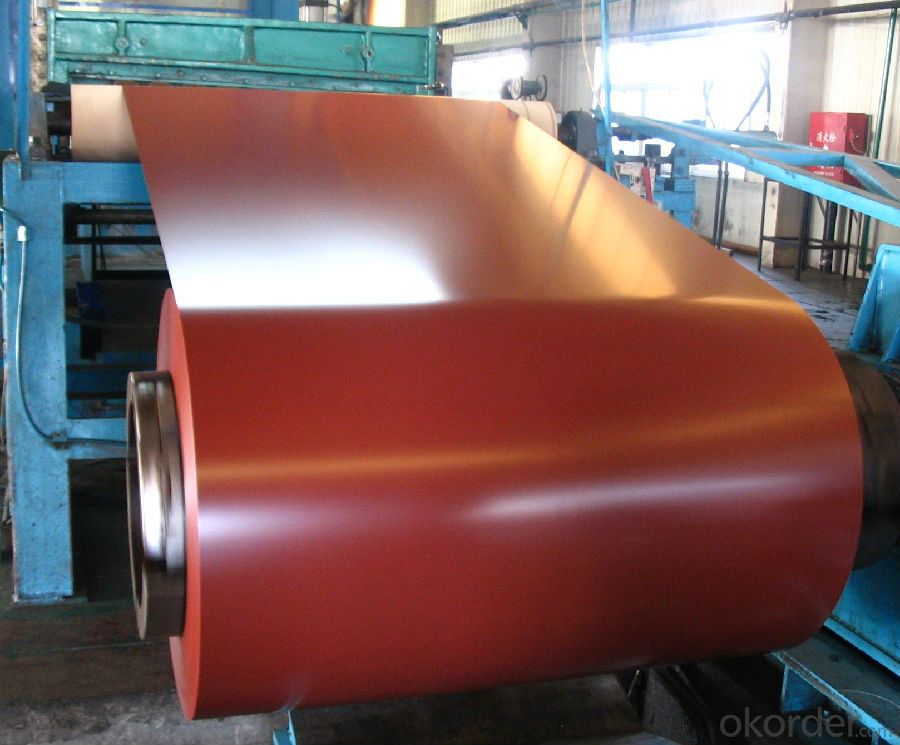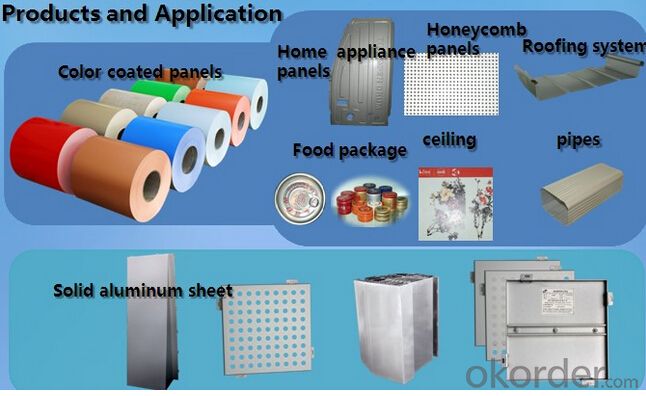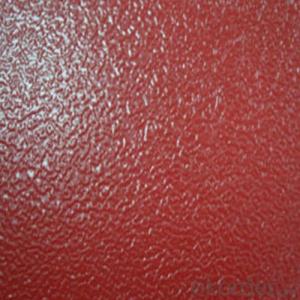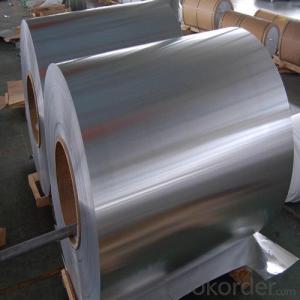Food Grade Coating Stucco Embossed Aluminum Freezer Sheet
- Loading Port:
- Shanghai
- Payment Terms:
- TT OR LC
- Min Order Qty:
- 5 m.t
- Supply Capability:
- 100000 m.t/month
OKorder Service Pledge
OKorder Financial Service
You Might Also Like
Item specifice
1.Structure of Food Grade Coating Stucco Embossed Aluminum Freezer Sheet Description:
Food Grade Coating Stucco Embossed Aluminum Freezer Sheet is widely used in the strength requirements of the product. Products commonly used in signs, billboards, building exterior decoration, bus body, high factory wall decoration, kitchen sink, lamp, fan, electronic components, chemical apparatus, sheet processing, deep drawing or spinning hollow ware, welding parts, heat exchangers, Bell surface and plate, plates, kitchen utensils, accessories, safety equipment and other.
2.Main Features of Food Grade Coating Stucco Embossed Aluminum Freezer Sheet:
Aluminum Alloy: 1100 3003 3004 5052 5182
Temper: O-H112
Thickness: 0.15mm---1.5mm
Width: From 18mm---2000mm
3. Food Grade Coating Stucco Embossed Aluminum Freezer Sheet Images:


4. Food Grade Coating Stucco Embossed Aluminum Freezer Sheet Specification:
ALLOY | SEPCIFICATION | TEMPER | |
THICKNESS | WIDTH | ||
1100, 1050,1060,1070 | 1.0-5.0 | 1000-2200 | H114,H112 |
3003,3004,3105 | 1.0-5.0 | 1000-2200 | H114,H112 |
5052,5005,5754,5083 | 1.0-5.0 | 1000-2200 | H114,H112 |
5.FAQ
Q1.How long have you been in this product?
A1:More than 10 years.
Q2. What's the minium quantity(MOQ)?
A2. 5 Metric tons
Q3. How long is shipping time?
A3. 7 (ready-made products)-25 days(OEM)
Q4. How do you guarantee the quality?
A4. 1. Cooperating and Exchaning experience with sevral quoted aluminum companies
2. Japanese and Swiss production line and skilled works (regular training and testing)
3. more than 10 years production experience.
Q5. Do you have after sale service?
A5. Yes. Any quality problem occurs within one year, pls take photoes,we will be responsible.
- Q:Can aluminum sheets be plasma cut?
- Yes, aluminum sheets can be plasma cut. Plasma cutting is a versatile and efficient method that can be used to cut a wide range of materials including aluminum. By using a high-velocity jet of ionized gas, known as plasma, the aluminum sheet can be precisely cut into the desired shape. Plasma cutting offers numerous advantages such as faster cutting speeds, cleaner cuts, and minimal heat-affected zones compared to traditional cutting methods. It is commonly used in various industries such as automotive, aerospace, and construction for cutting aluminum sheets of different thicknesses.
- Q:Are aluminum sheets suitable for electrical connectors?
- Yes, aluminum sheets are suitable for electrical connectors. Aluminum is a highly conductive metal, which makes it an excellent choice for transferring electric current. It has a low electrical resistance, allowing for efficient transmission of electricity. Additionally, aluminum is lightweight, corrosion-resistant, and cost-effective, making it a popular material for electrical connectors in various industries such as automotive, aerospace, and electronics. However, it is important to note that aluminum connectors may require additional measures to prevent galvanic corrosion when used with dissimilar metals.
- Q:Are 101 aluminum sheets suitable for chemical storage tanks?
- No, 101 aluminum sheets are not suitable for chemical storage tanks as they lack the necessary corrosion resistance for handling and storing chemicals.
- Q:Are 101 aluminum sheets suitable for cryogenic applications?
- Cryogenic applications are not suitable for 101 aluminum sheets. Although aluminum is generally a good choice for low-temperature environments because of its low thermal conductivity and high strength-to-weight ratio, 101 aluminum is not specifically designed to endure the extreme temperatures associated with cryogenic applications. In cryogenic applications, materials like aluminum alloys (for example, 5083 or 6061) or specialized cryogenic alloys like stainless steel or titanium are commonly used. These materials possess improved properties that allow them to handle the extreme cold temperatures without compromising their structural integrity. Therefore, it is advisable to use materials specifically designed for cryogenic applications to ensure optimal performance and safety.
- Q:Why does the glue of the aluminium curtain wall glue bubble? At the same time, do not bubble on the side glass, what is the reason?
- Brothers, there are several kinds of bubble gum, first to check is not part of the foam glue strip plug is not good, should be smooth, playing in a plastic bubble, not to leave the air, also can't have water, air water will bubble. In addition, glue when the temperature is very important no, when hot hit. Glue master experience play a decisive role, there is a great work in absolute don't let coolie, evenness and speed are very important.
- Q:Can aluminum sheets be used for food processing equipment?
- Aluminum sheets are suitable for food processing equipment. The food industry favors aluminum for its many advantageous properties. It is lightweight, long-lasting, resistant to corrosion, and possesses excellent thermal conductivity. These attributes make aluminum sheets perfect for various applications in food processing equipment, including mixing bowls, cooking utensils, baking trays, and food storage containers. Furthermore, aluminum is non-toxic and does not interact with food, guaranteeing the safety and quality of processed products. Nevertheless, it is important to note that aluminum should not directly touch acidic or alkaline foods as it may react and impact the taste or quality of the food. In such instances, a protective barrier or lining should be employed. On the whole, aluminum sheets are extensively employed in the food industry due to their adaptability, durability, and food-safe characteristics.
- Q:What does aluminum plate "H12" mean?
- H12 indicates hardening of the work to the 1/4 state.Two digits (called hxx States), or three bit Arabia numbers (called hxxx States) are added to the letter H to indicate the subdivision status of the H.The first digits behind the H represent the basic handler for this state, as shown below:H1 - simply work hardening treatment status. The utility model is suitable for the condition that the required strength is obtained by the work hardening without the heating treatment. H2 - the state of work hardening and incomplete annealing. Apply to the work hardening degree exceeds the requirements of the finished products, after incomplete annealing, so that the strength to reduce the target products. For the alloy softening natural aging at room temperature, H2 and H3 corresponding to the minimum ultimate tensile strength of the same value; for other alloys, H2 and H1 corresponding to the minimum ultimate tensile strength of the same value, but the extension rate is slightly higher than h1. H3 - the state of work hardening and stabilization treatment.
- Q:How do you determine the thickness tolerance of an aluminum sheet?
- One way to determine the thickness tolerance of an aluminum sheet is by referring to the industry standards or specifications for aluminum sheet thicknesses. These standards outline the acceptable range of thickness variations and provide tolerance values. Additionally, using precision measuring tools such as micrometers or calipers, you can directly measure the thickness at various points on the sheet and compare it to the specified tolerance range to determine if it meets the required thickness tolerance.
- Q:General characteristics of pure aluminium plate of pure aluminium plate
- I really want to know to call 1362889760 for your reference as follows: according to the content of different aluminum alloy elements can be divided into 8 series respectively 1***, 2***, 3***, 4***.5***.6***.7***.8*** according to the different processing technology can be divided into cold and hot rolling. They can be divided into thin plate and medium plate according to their thickness. GB/T3880-2006 standard specifies a thickness of 0.2 millimeters, called aluminum foil. More commonly used grades: pure aluminum plate, 1060 plate. Foil. Thick plate, tensile tube. Extruded tube. Type. Bar. Cold processing bar mainly for corrosion resistance in forming of high places, but not of high strength components, such as chemical equipment, marine equipment, railway tanker, conductive materials, instruments and materials, electrode etc.. 3003: plate, strip. Foil. Thick plate, tensile tube. Extruded tube. Type. Bar. Wire rod。 Cold bar, cold wire, rivet wire, forging, foil, heat sink material mainly used for processing requires good molding property, high corrosion resistance, good weldability or parts, or both have these properties need than the workpiece of 1*** alloy with high strength, such as the transport of fluids tank and tank, pressure tank, storage device, heat exchanger, chemical equipment, aircraft fuel tank, oil pipe, reflective panels, kitchen equipment, cylinder washing machine, rivet, wire. 3003 aluminum alloy sheet, plate, tube drawing. Extruded tubes, houses, partitions, roof covers, piping, etc. 3004 plates, thick plates, tensile tubes.
- Q:What is the yield strength of aluminum sheets?
- The yield strength of aluminum sheets may differ due to several factors, including the aluminum alloy, the tempering process, and the sheet thickness. Typically, aluminum sheets exhibit a yield strength that falls within the range of 10,000 psi (69 MPa) to 45,000 psi (310 MPa). Nonetheless, it is crucial to acknowledge that these values are only estimates and can fluctuate depending on the precise grade and temper of the aluminum in question.
1. Manufacturer Overview |
|
|---|---|
| Location | |
| Year Established | |
| Annual Output Value | |
| Main Markets | |
| Company Certifications | |
2. Manufacturer Certificates |
|
|---|---|
| a) Certification Name | |
| Range | |
| Reference | |
| Validity Period | |
3. Manufacturer Capability |
|
|---|---|
| a)Trade Capacity | |
| Nearest Port | |
| Export Percentage | |
| No.of Employees in Trade Department | |
| Language Spoken: | |
| b)Factory Information | |
| Factory Size: | |
| No. of Production Lines | |
| Contract Manufacturing | |
| Product Price Range | |
Send your message to us
Food Grade Coating Stucco Embossed Aluminum Freezer Sheet
- Loading Port:
- Shanghai
- Payment Terms:
- TT OR LC
- Min Order Qty:
- 5 m.t
- Supply Capability:
- 100000 m.t/month
OKorder Service Pledge
OKorder Financial Service
Similar products
New products
Hot products
Hot Searches
Related keywords





























